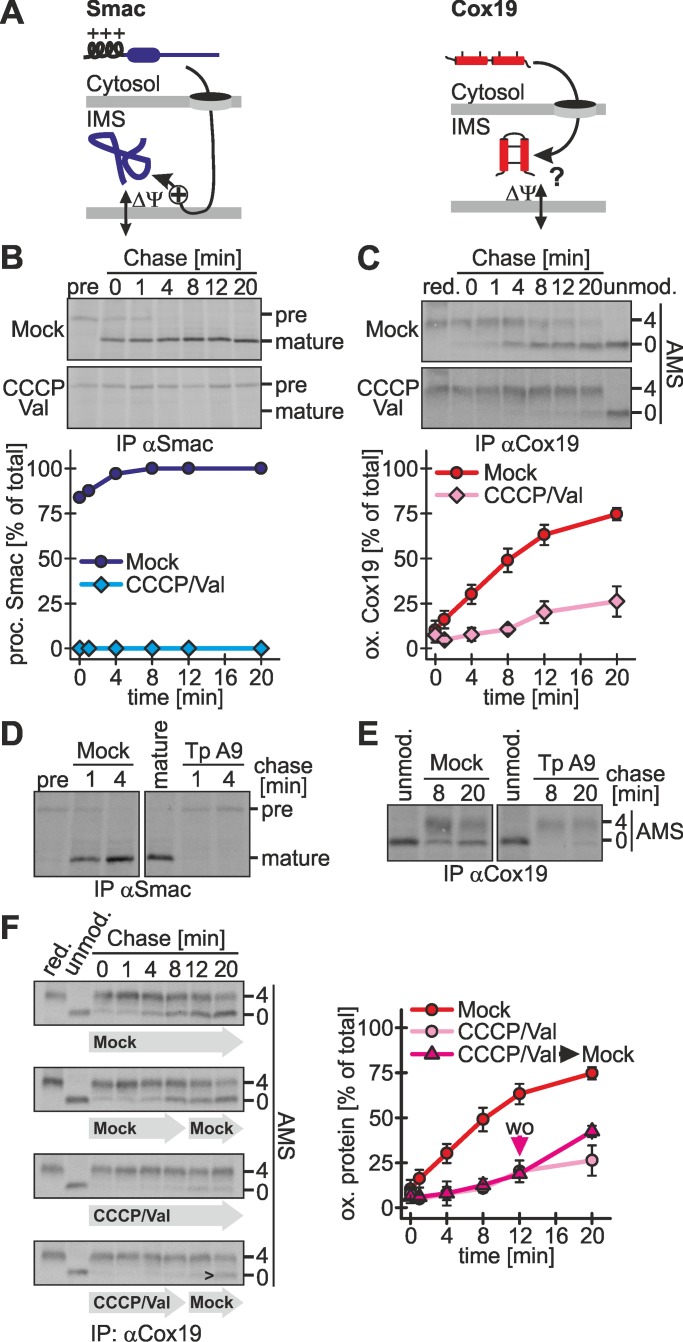FIGURE 7:
Oxidation-dependent import depends on the mitochondrial membrane potential. (A) Scheme for the membrane potential dependence of Smac and Cox19. Because Smac relies on a mitochondrial targeting sequence, its import depends on the membrane potential. It is not clear whether the membrane potential influences IMS import of Mia40-dependent substrates such as Cox19. (B) Smac import is coupled to the mitochondrial membrane potential. Experiments were performed as described in Figure 1B, using an antibody against Smac, except that cells were either Mock-treated or treated with 2 μM CCCP and 1 μM valinomycin. Val, valinomycin. Reported values are the mean of two independent experiments. (C) Cox19 import depends on the mitochondrial membrane potential. Experiments were performed as described in B, using an antibody against Cox19. Val, valinomycin. Reported values are the mean of at least two independent experiments. (D, E) Cox19 oxidation is impaired by treatment with tyrphostin A9 (Tp A9). Experiments were performed as described in Figure 1B, using antibodies against Smac (D) and Cox19 (E), respectively. Cells were either mock-treated or incubated with 1 μM tyrphostin A9. (F) The block in Cox19 import upon depletion of the mitochondrial membrane potential is reversible. Experiments were performed as described in Figure 1B, using an antibody against Cox19. Cells were either Mock-treated or incubated with valinomycin and CCCP. After 8 min, chase cells were washed with buffer and for the remaining 12 min of the chase time incubated with chase medium or chase medium containing valinomycin and CCCP. Val, valinomycin; wo, washout of CCCP/Val. Reported values are the mean of two independent experiments. The arrowhead indicates the appearance of oxidized Cox19 after washout of CCCP and valinomycin. Error bars in all graphs are means ± SD.

